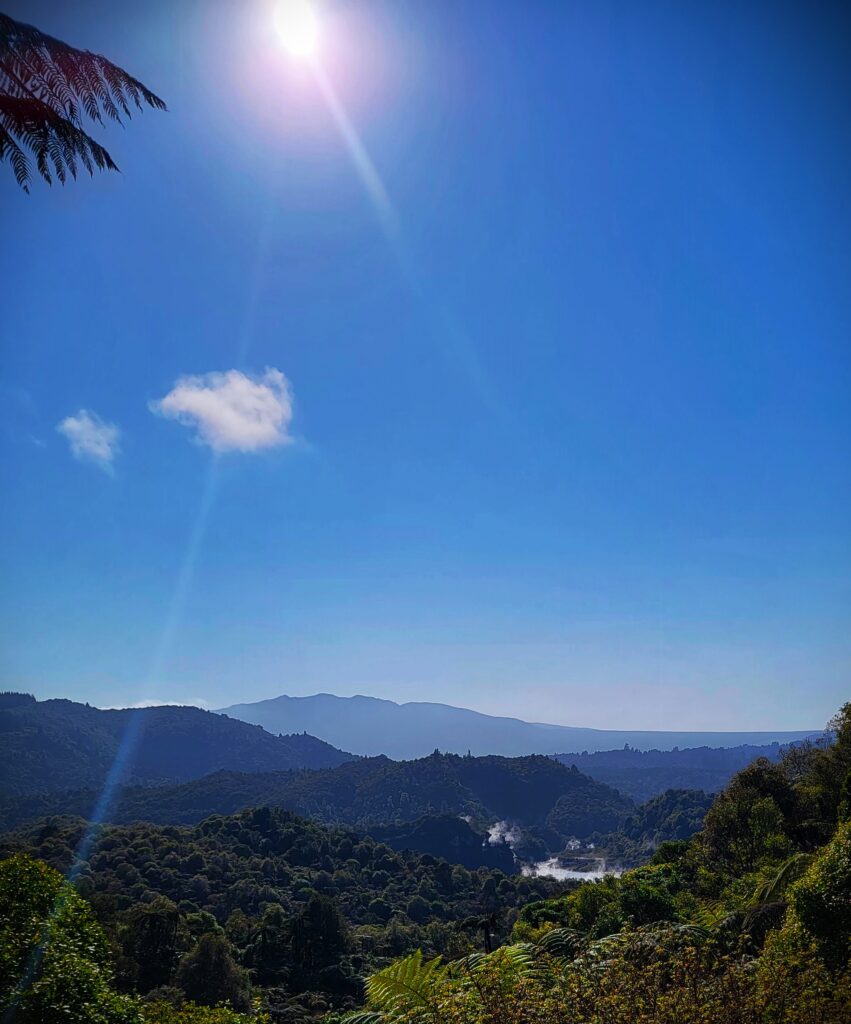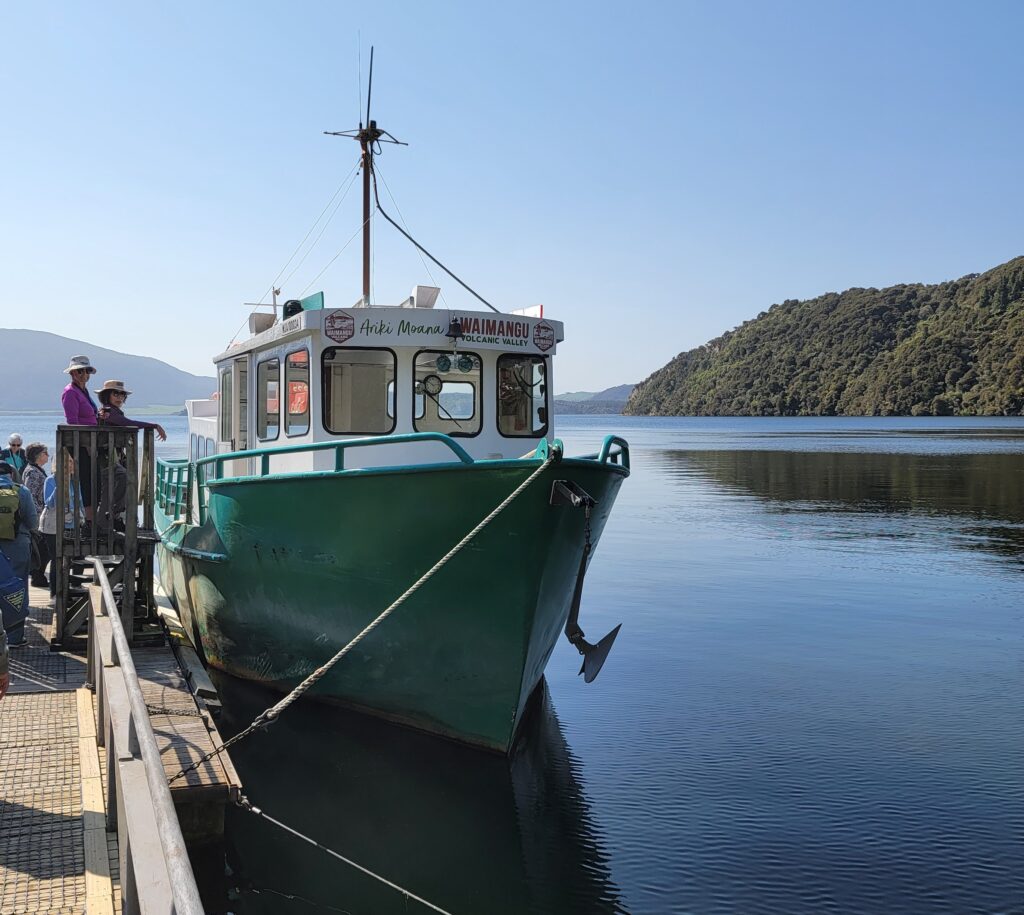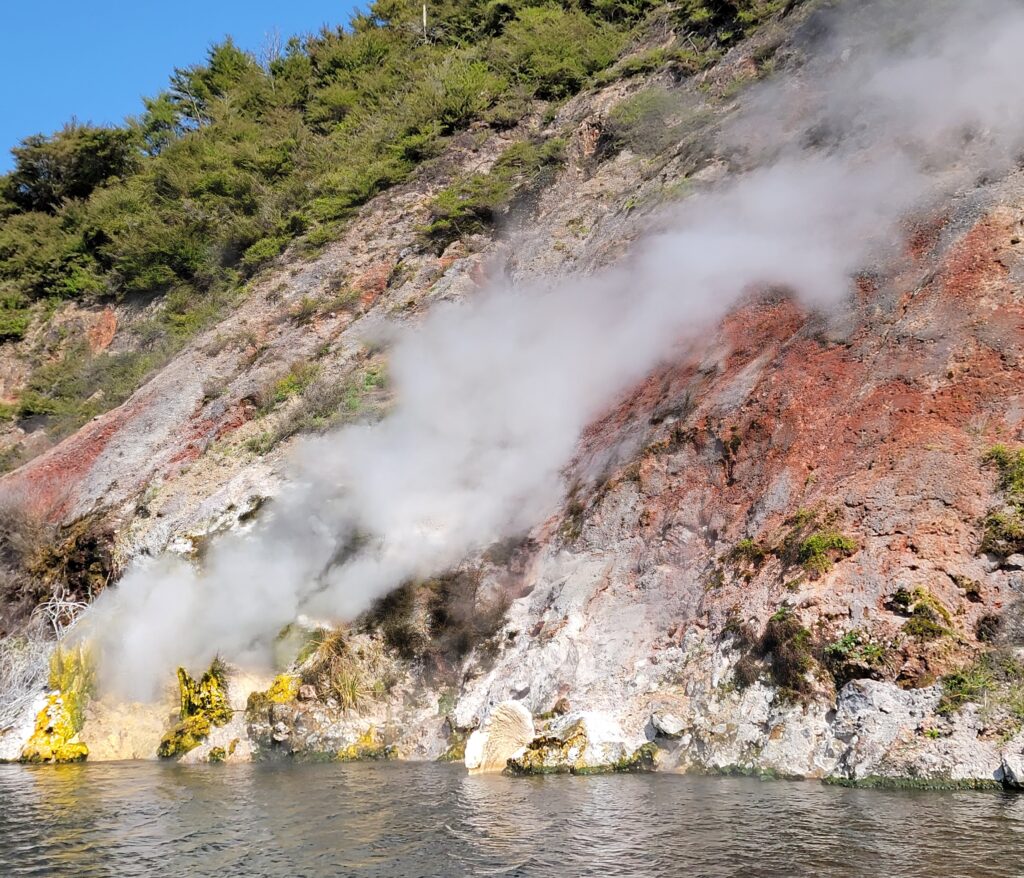Waimangu (Wai = water, Mangu = black) is the world’s youngest thermal valley. The Waimangu Geothermal system was created by the eruption of Mt. Tarawera on 10 June 1886, the only one created as a direct result of a volcanic (basalt) eruption. In the earliest hours of that day, persistent and increasingly large earthquakes were noticed as far away as Rotorua. At about 2 a.m., a column of black ash suddenly erupted from Ruawahia, the mountain’s highest dome. For the next two hours, the whole length of the mountaintop was a gigantic broad sheet of erupting fire. At about 3 a.m., an enormous cloud was seen above Rotomahana (“Warm Lake”), indicating the eruption was extending to the southwest. The rift eventually opened in both directions until a line of 16 kilometers extended from the northeast of the mountain to the Southern Crater at Waimangu.

At Rotomahana, the rising basalt magma triggered a tremendous explosion of the hydrothermal system that had fed the hot springs there, which had become a big spa destination for visitors, including both pink and white “terraces” very similar to Pamukkale in Turkey. The resulting “ejecta” rose to a height of about 11 kilometers of dust, sand, rock, lava, steam and other gases. As it fell, it inundated the surrounding country in a circle of about 6k with a rain of boiling debris. Further explosions continued for hours. Altogether, an area of about 15,000 square km received an appreciable covering as a result of the six hour upheaval. Seven small villages were destroyed, with 105 lives lost and all plant, bird and animal life extinguished.
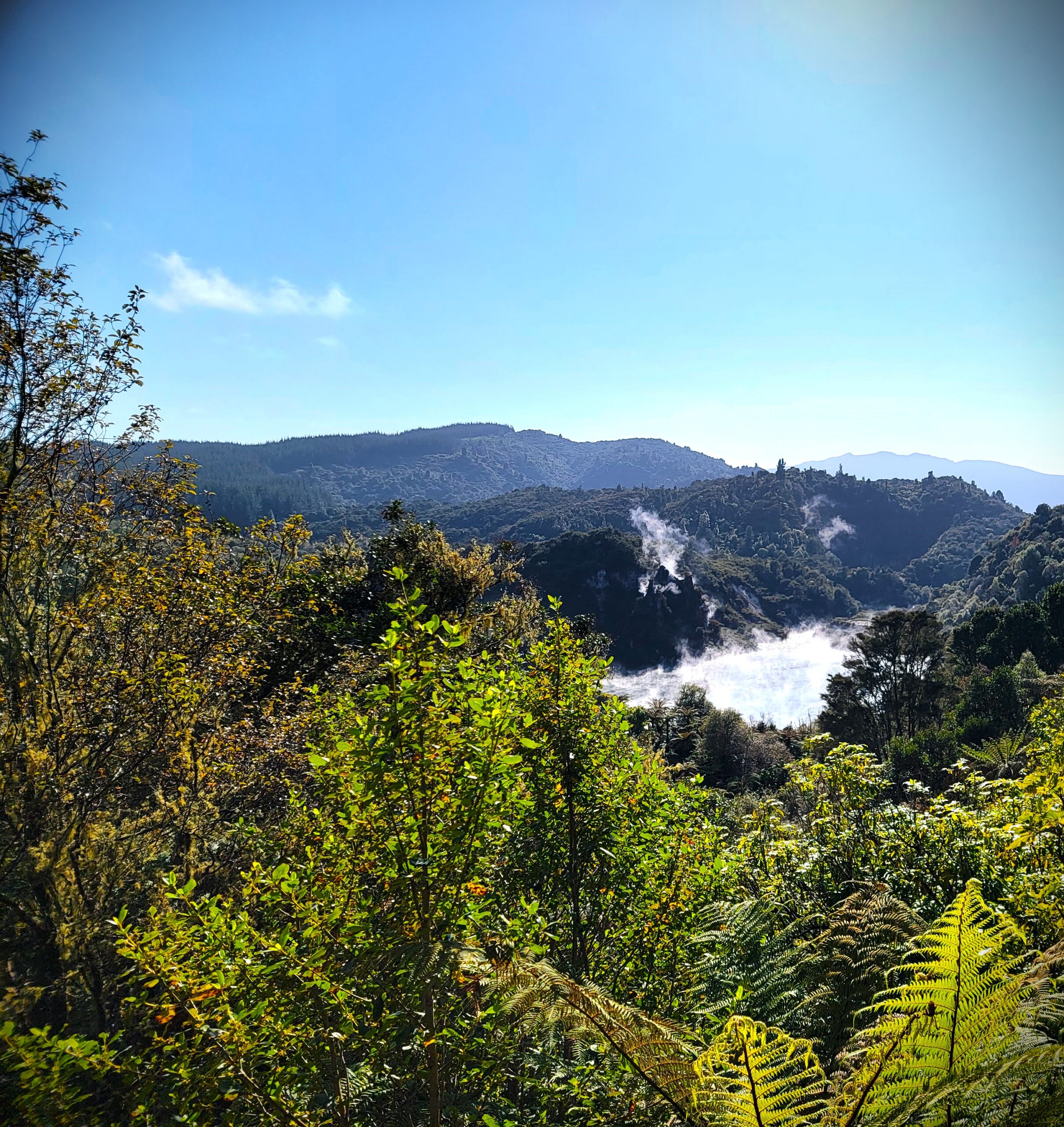
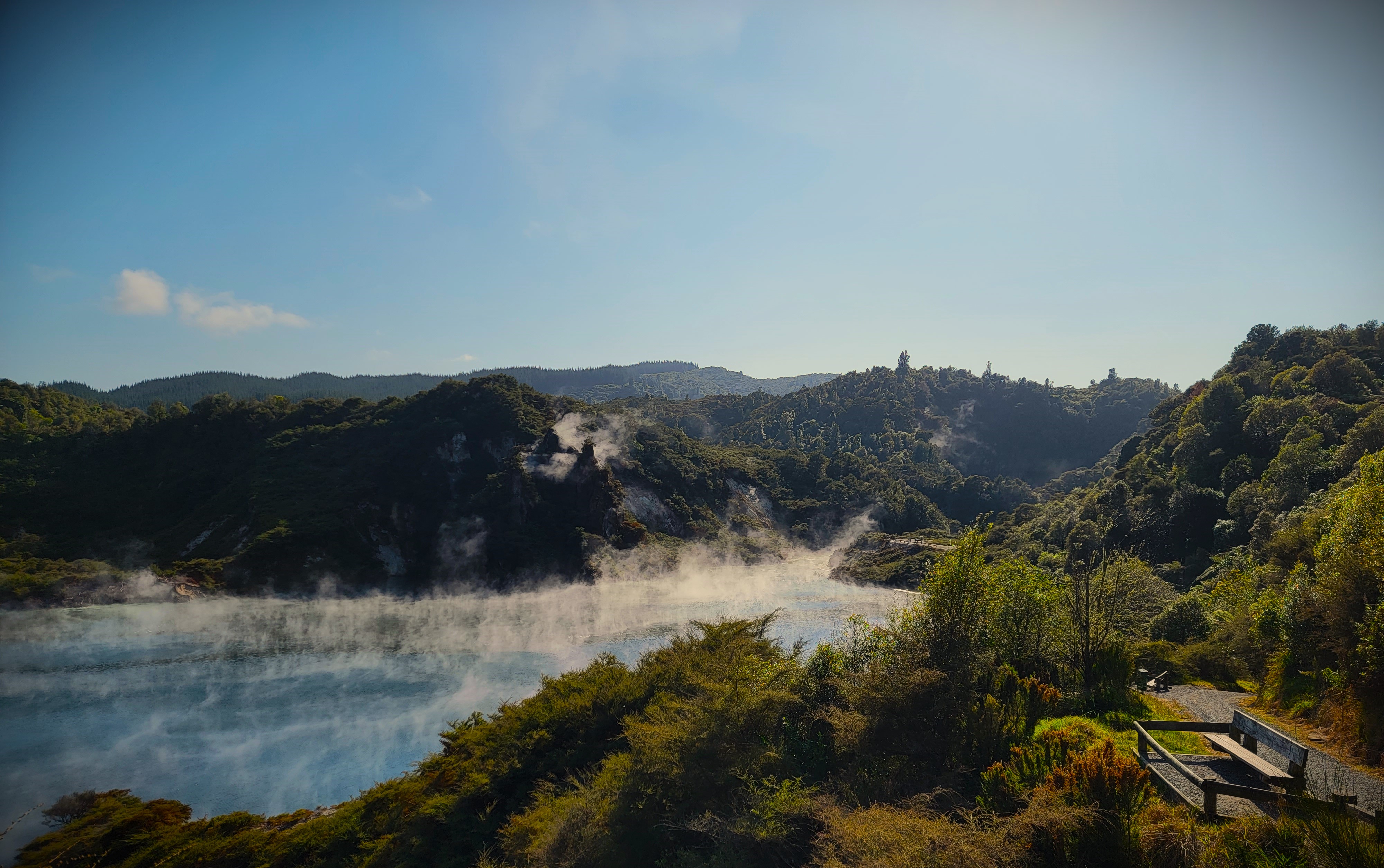
We walked down into the volcanic valley. In 1917, the last major event occurred with the hydrothermal eruption of Echo Crater. This led to the formation of Frying Pan Lake, which is acidic with a 3.2 pH and a temperature of about 50C (130F).
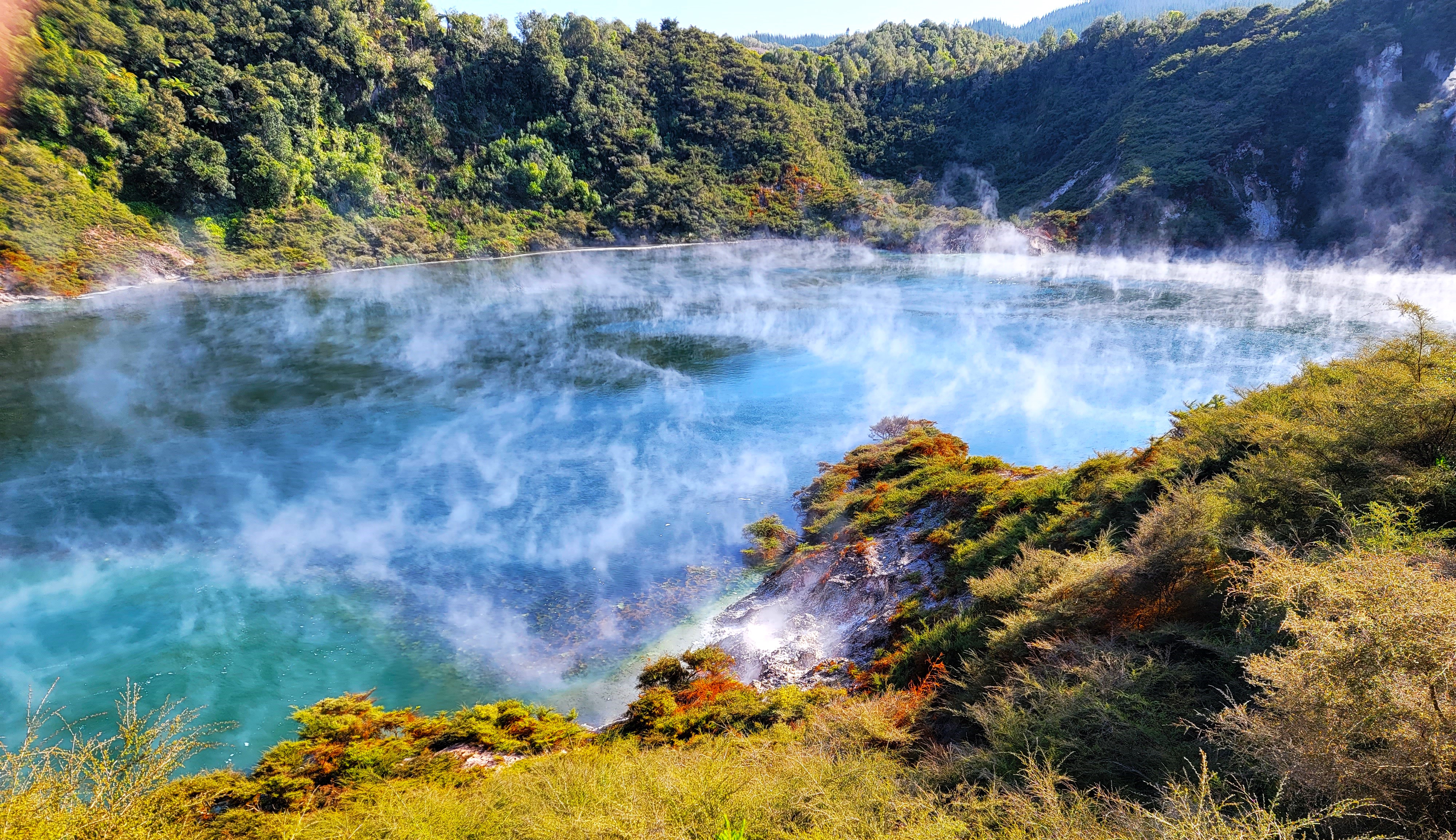
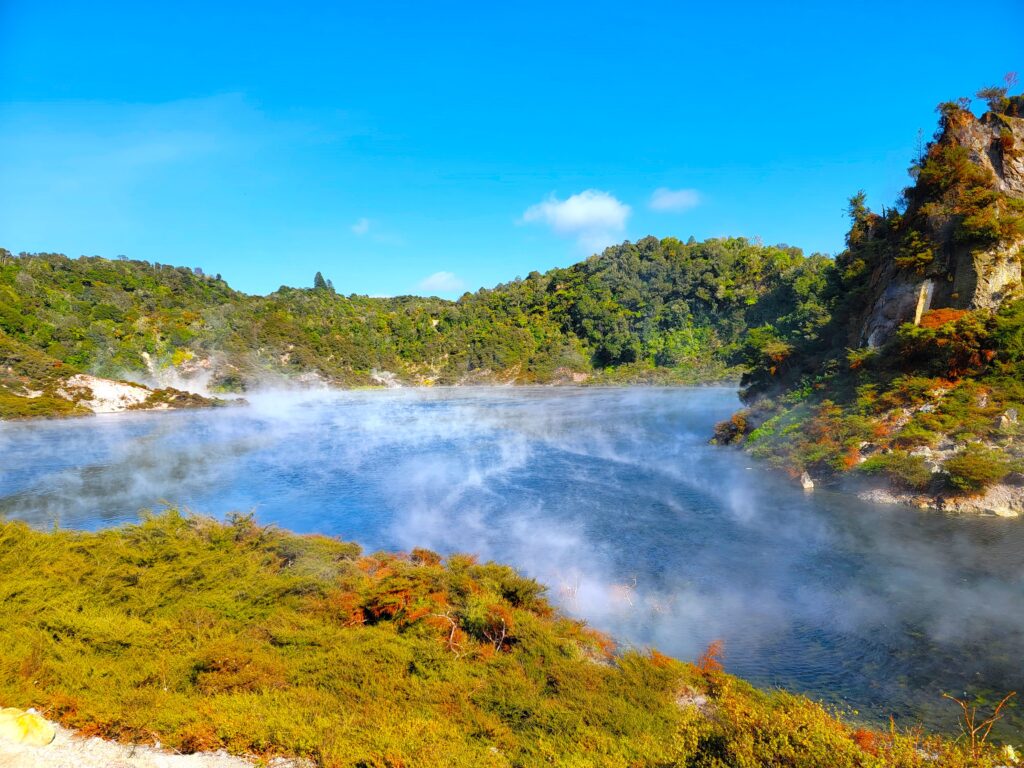
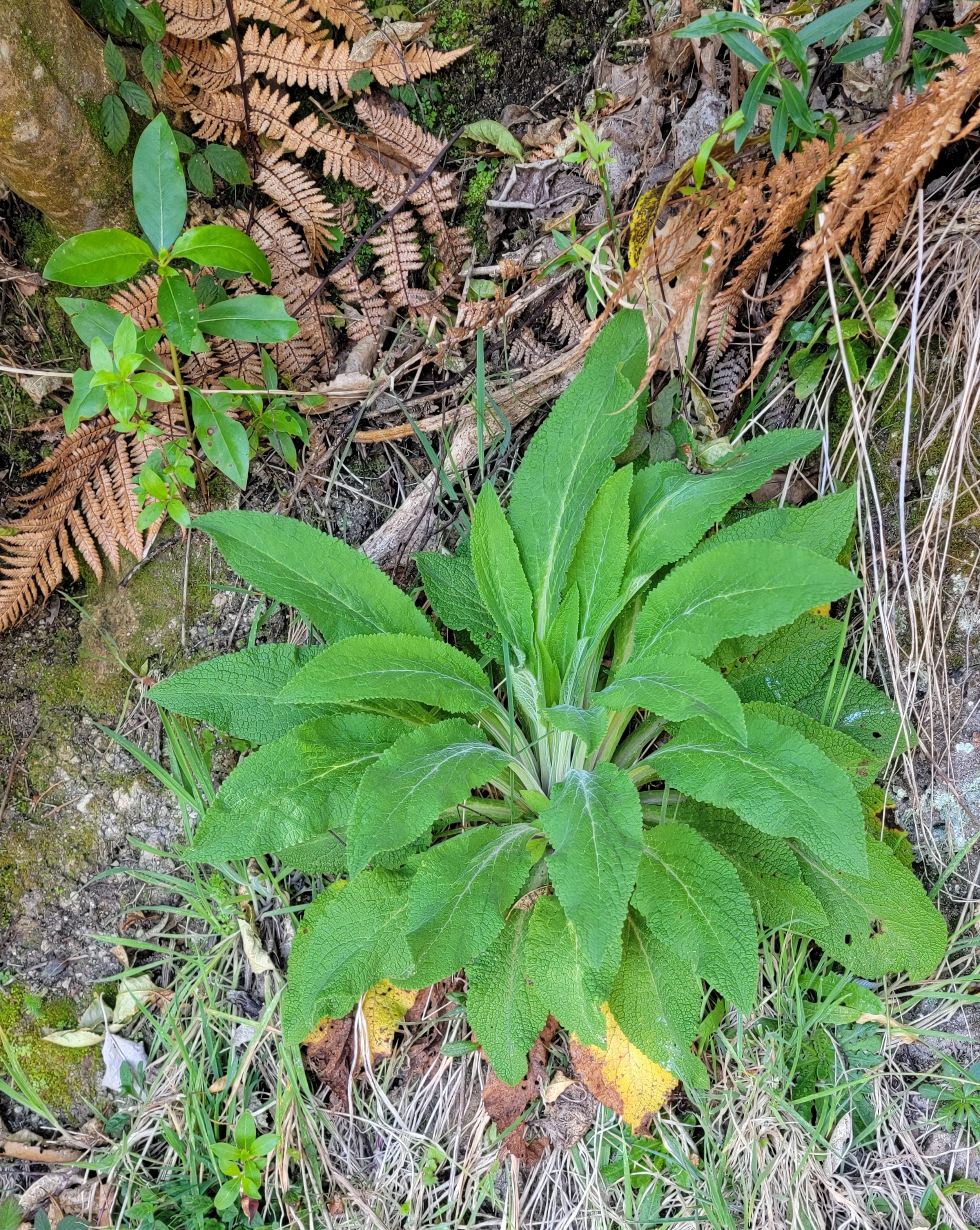
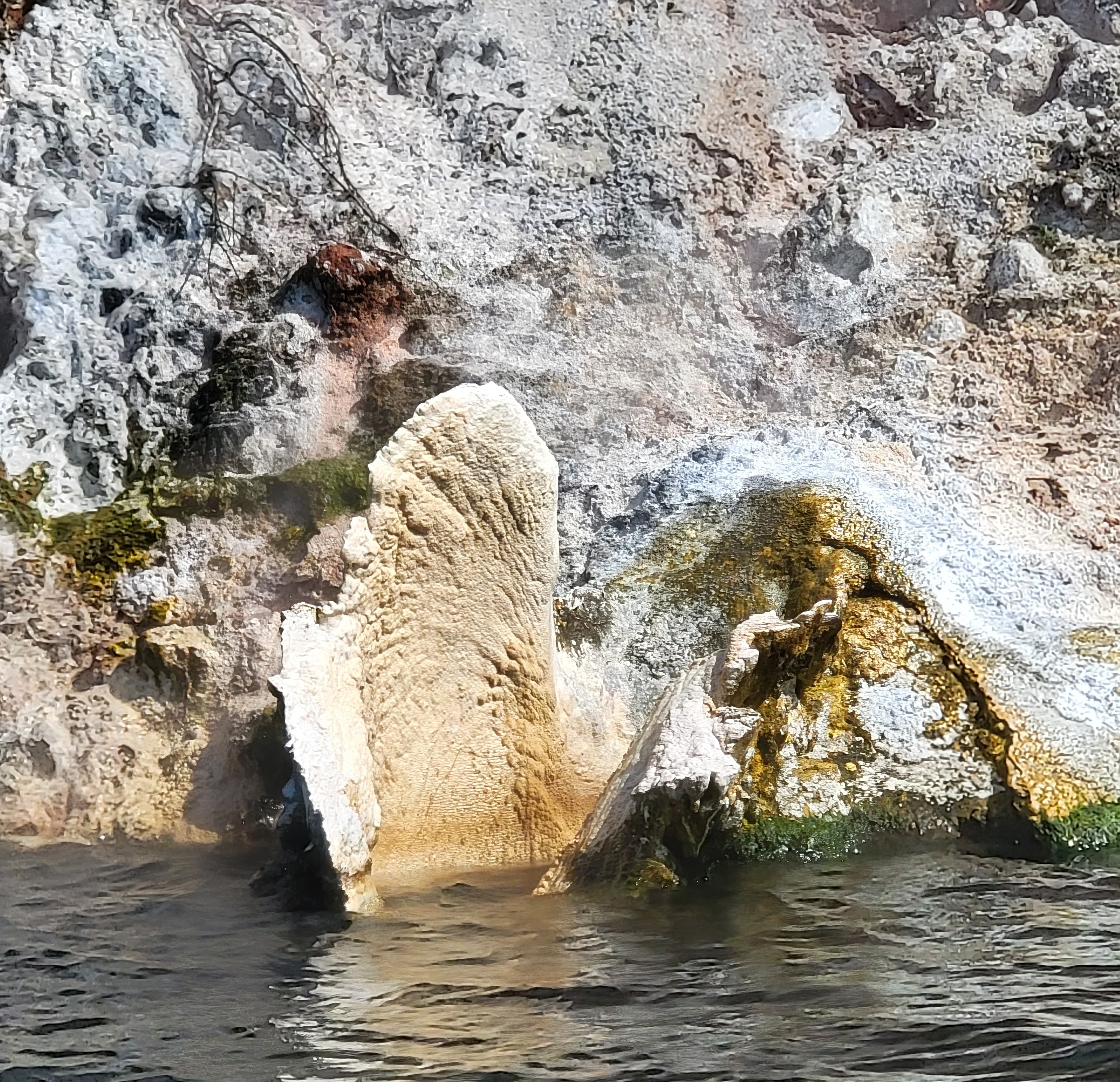
The evolution of the Waimangu ecosystem has been carefully recorded since the entire ecosystem was destroyed by the eruption. Rotomahana has many bird species, such as Grey Duck, Scaup (the native Diving Duck), Cormorant, Black Swan (of course), Mallard, Coot, Grebe, White-Faced Heron, Pukeko (New Zealand Swamp Hen – we’ve seen many of these), Kereru (New Zealand pigeon – like ours but a gorgeous almost surreal green running up to a red/green head/white chest), kawaupaka (“little shag” – we saw one today – a bit like a sea hawk, they eat eels, fish, etc.). Also American steel head rainbow trout were introduced in the lake in 1913 and are now prolific. Difficult public access conserves the population, which is a pure breed as there is no escape from the lake.
We learned a lot more about the “imported” fauna that is doing so much damage to the New Zealand habitat. Reminds me of the “Little Old Lady Who Swallowed A Fly” situation in Hawaii where one animal was brought in to “combat” another then overran the islands and another was brought in and another…We saw some of the possum and stoat (ferret) traps with which they’re trying to combat this situation. (Their possums look nothing like our opossums btw – they are more like a gigantic bushy-tailed squirrel. They were brought here for their fur and – surprise – escaped and multiplied as there are no “apex predators.”)
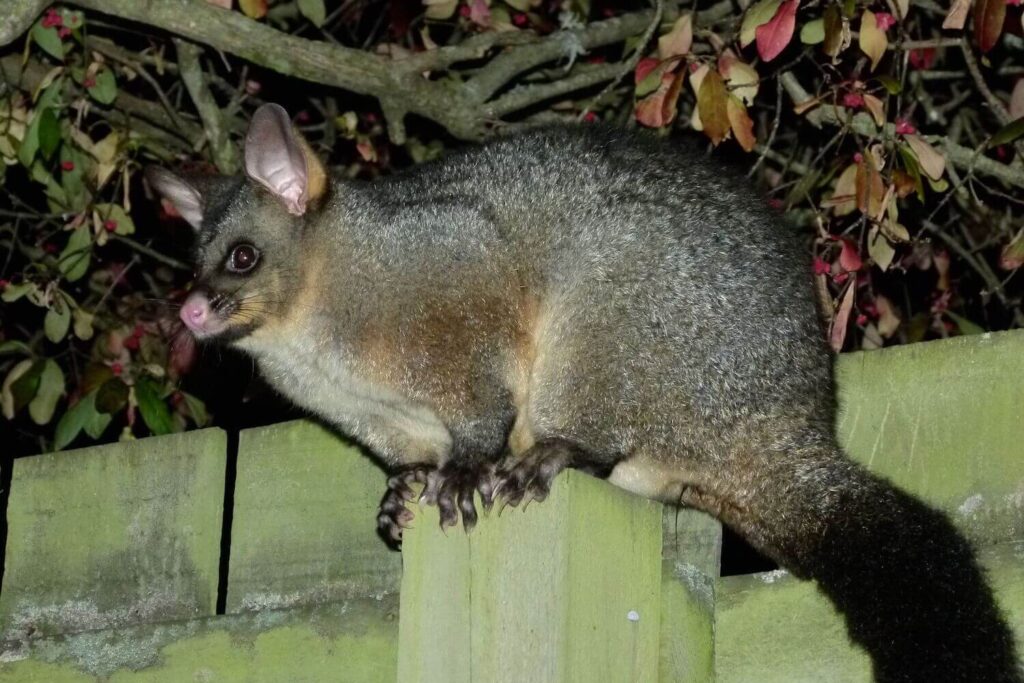
Our hiking guide, driver, and now boat driver, Jon, then took us on the cruise on Rotomahana. This lake is about 20x bigger than it was before the eruption and its water level is 40m higher due to the blockage of the former outflow valley. We chugged over the areas that used to be the white and pink terraces (now 40m under water). The lake is 100m deep, mainly from rain water.
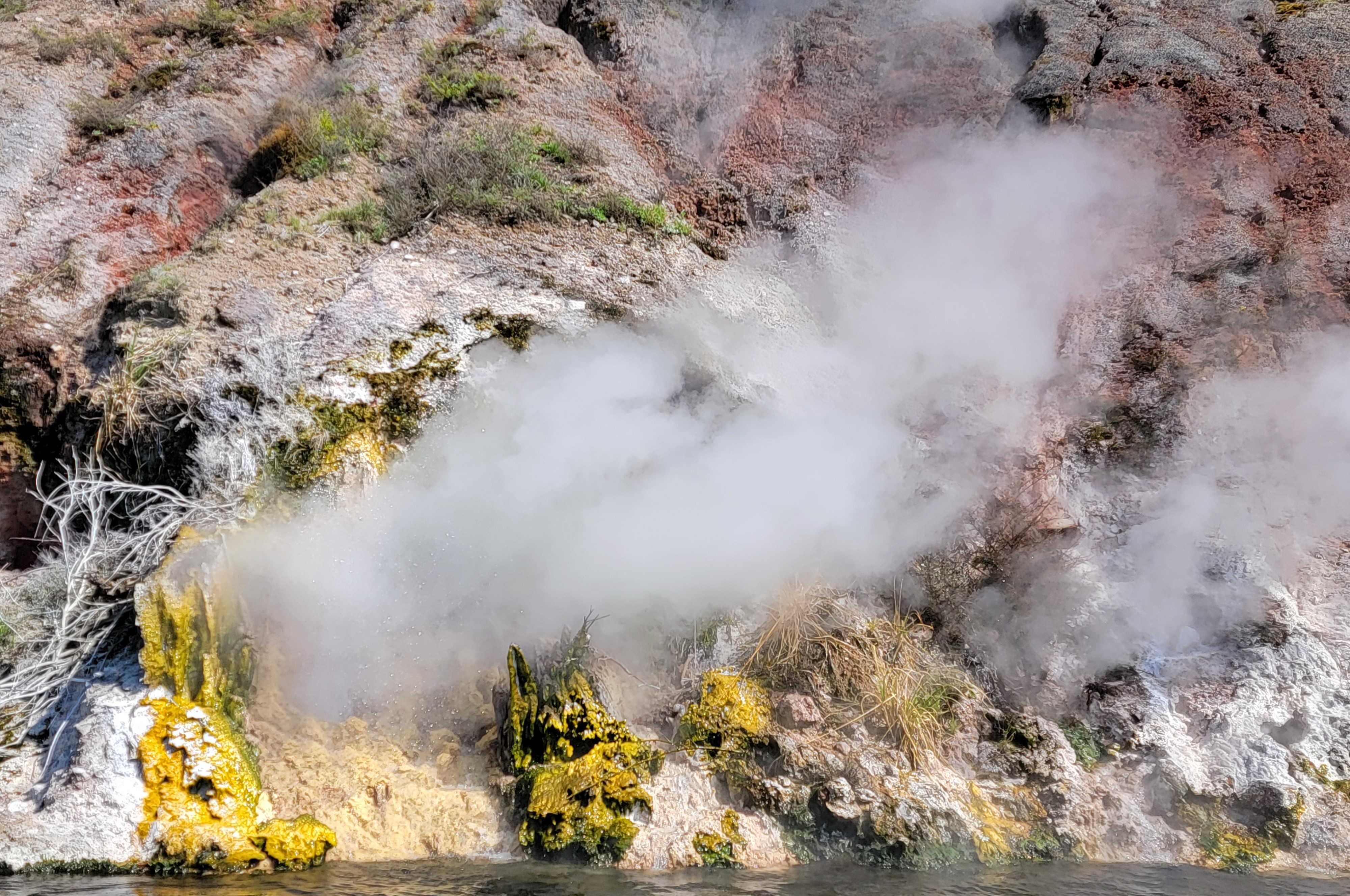
We saw many “hot spots” along the edges on our cruise:
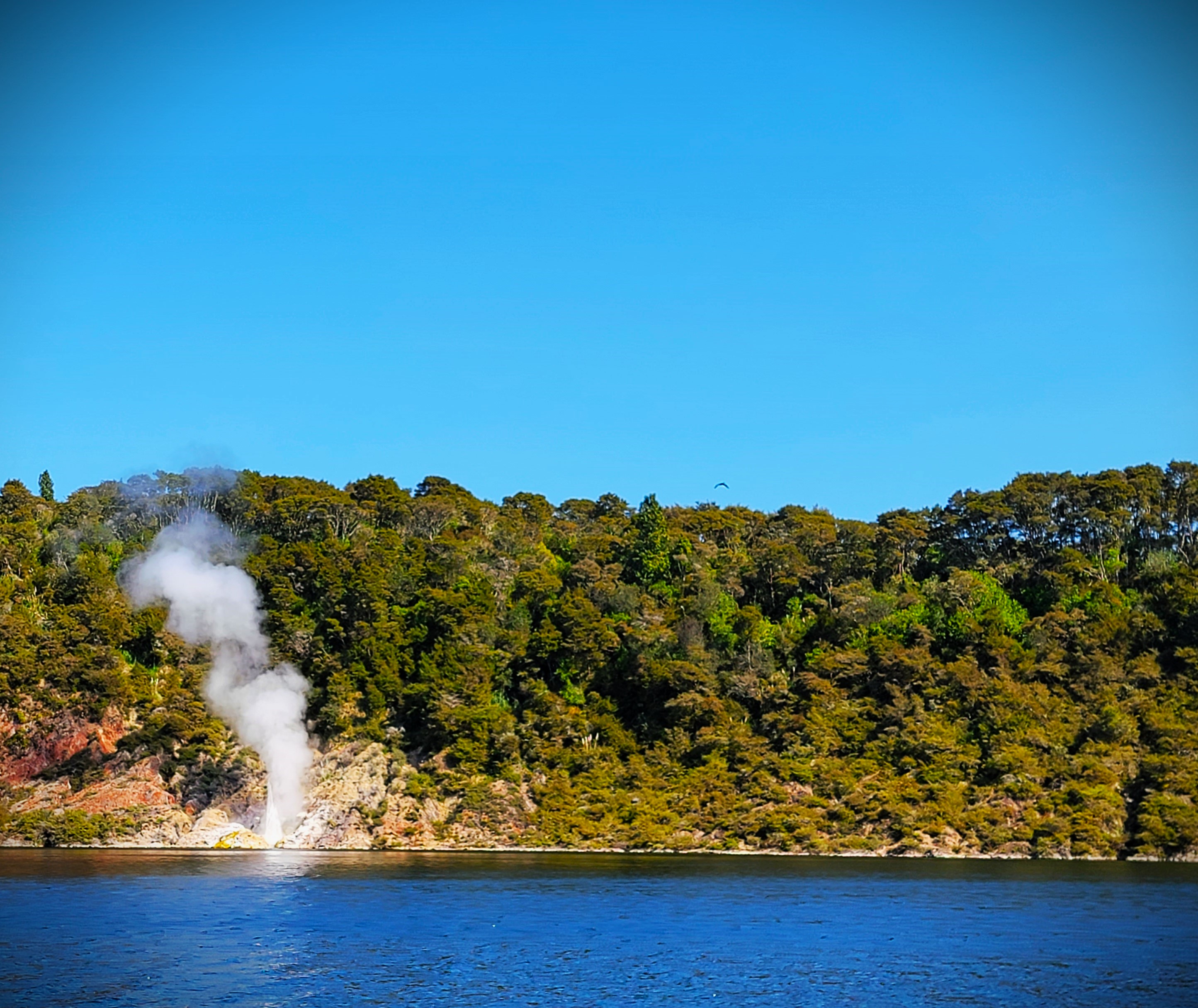
Elizabeth and I were looking at Rotomahana, “trying” to see the crater that Jon was discussing. Suddenly, I realized that the “shadow” on the side of the mountain was the crater! I outlined it for her, and we were both open-mouthed at how big it was! I took the photo on the left, then enlarged it and darkened it a bit, so you can see the crater clearly (below). Wow!

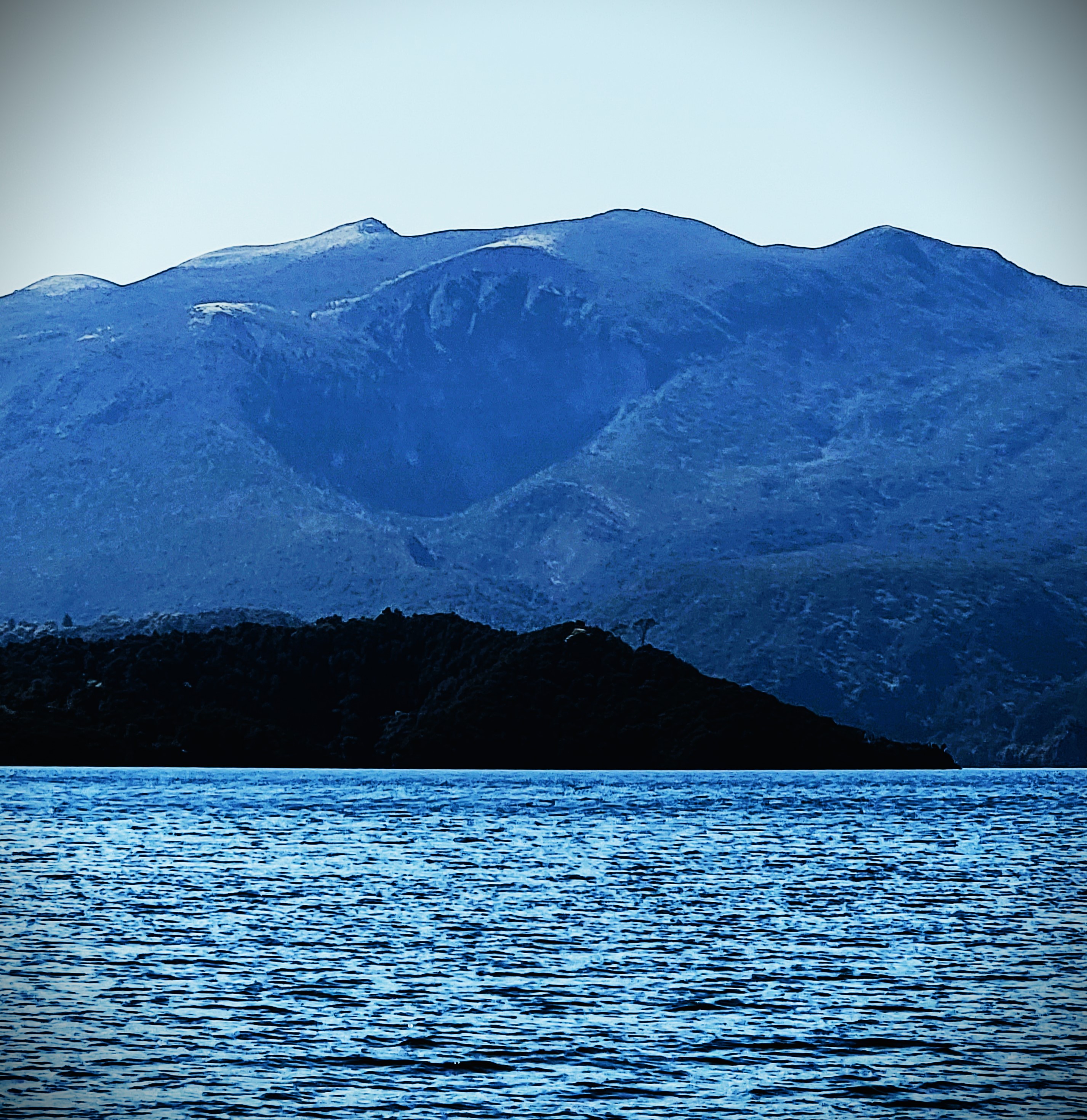
We had a sandwich lunch back at the valley lodge, and I bought a pair of paua shell earrings (New Zealand abalone – lustrous nacre, but deep blue instead of pearly white like our abalone). I also bought two T-shirts, because the price was quite reasonable for the quality, and a pack of cards for my grandson Caleb, who (at least at last check) collects them (he does card tricks), plus a “rangatira” necklace for my friend Marty.
I’m not very good at buying presents – I am terrible at “giving things” or “buying things” just for the sake of it. If I see something that “speaks to me” for a specific person, I do get that – but I don’t buy just to buy.
(Point of fact – ahem – I bought a “possum G-string” for my friend James who is a bit outrageous – but I haven’t gotten “chachkis” for anyone and keep trying to remember that people like things like that.)
Lynn and 10 others are currently doing the Canopy Tour/ziplines and high bridges. It was voted #1 in the world – but without my BFF Sharon to protect me, I passed. (We did one on the Big Island – one and done, bay-bee…)
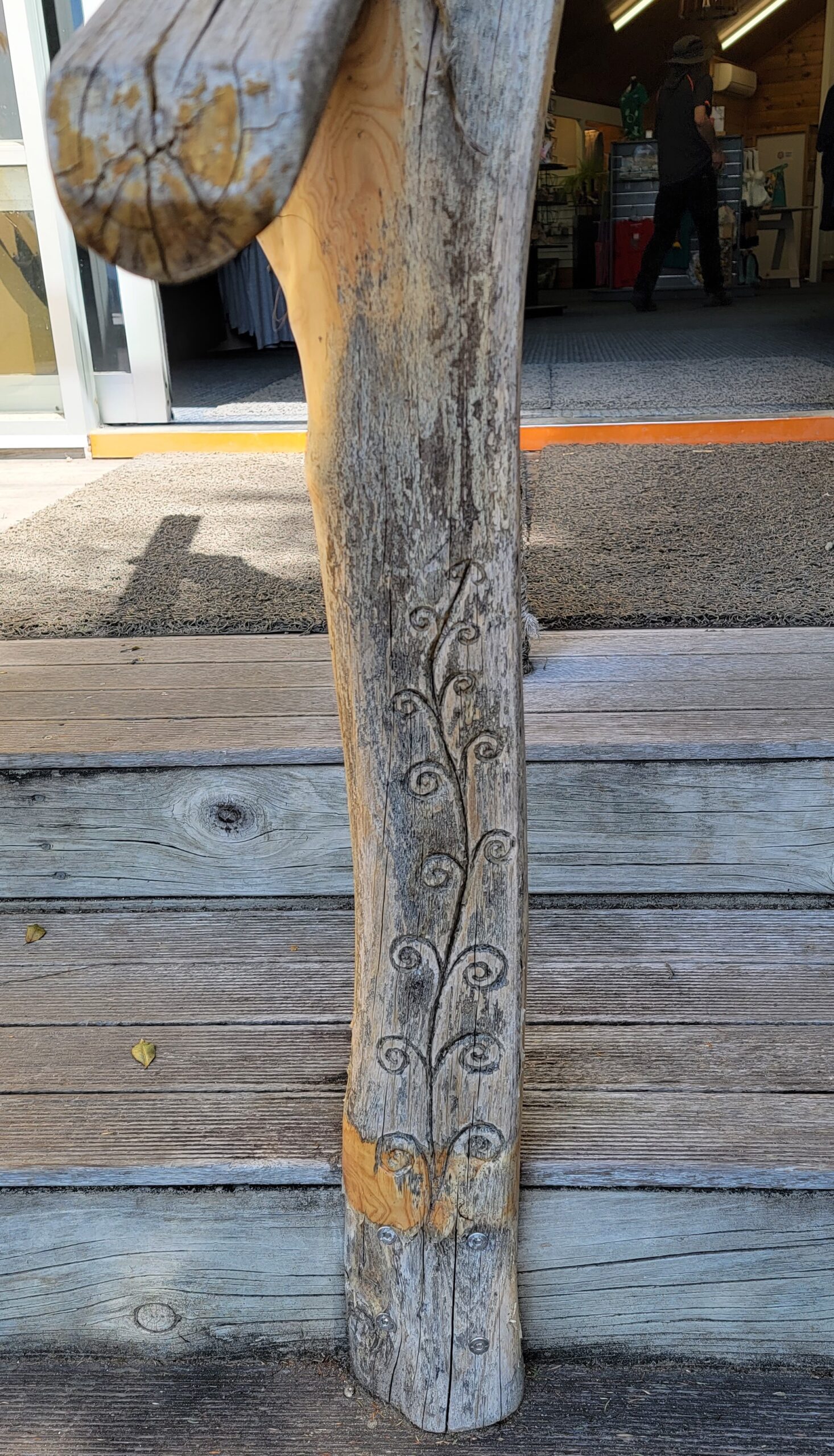
We head from here to the Home-Hosted dinner on Lake Rotorua. I will post this now to get it up, but you might want to re-visit it tomorrow as I will post about the dinner. I am bringing two big one-pound bags of assorted Ghirardelli chocolates as my gift, because the S.F. sourdough was rejected. (I understand this a bit more now, as Kiwis are rightly proud of their New Zealand sourdough, made entirely from local yeast.) Let’s see how the chocolate compares to their “pride and joy,” Whittaker’s!
Tomorrow – up early, then flight to Christchurch!
UPDATE: The home-hosted dinner was SO much fun! Apparently, usually, the group is split up, so that 4 or so folks go to a home. This time it was a big meal, all together, with one Whanau. It was a big one though! We had the mama and papa, then his sister ?Ruth? (I believe she said that they were a family of 14). She was the youngest of her siblings…just turned 65 four days ago and looked about 42, Papa was the oldest boy. Then also there was Uncle Walter who might have been her brother or might have been mama Maria’s brother, then Maria (daughter), her husband, and 2 of her kids . . .
We had amazing lamb straight from the firepit, salad, sweet potato, bread, and then “Hokey-Pokey” ice cream for dessert.
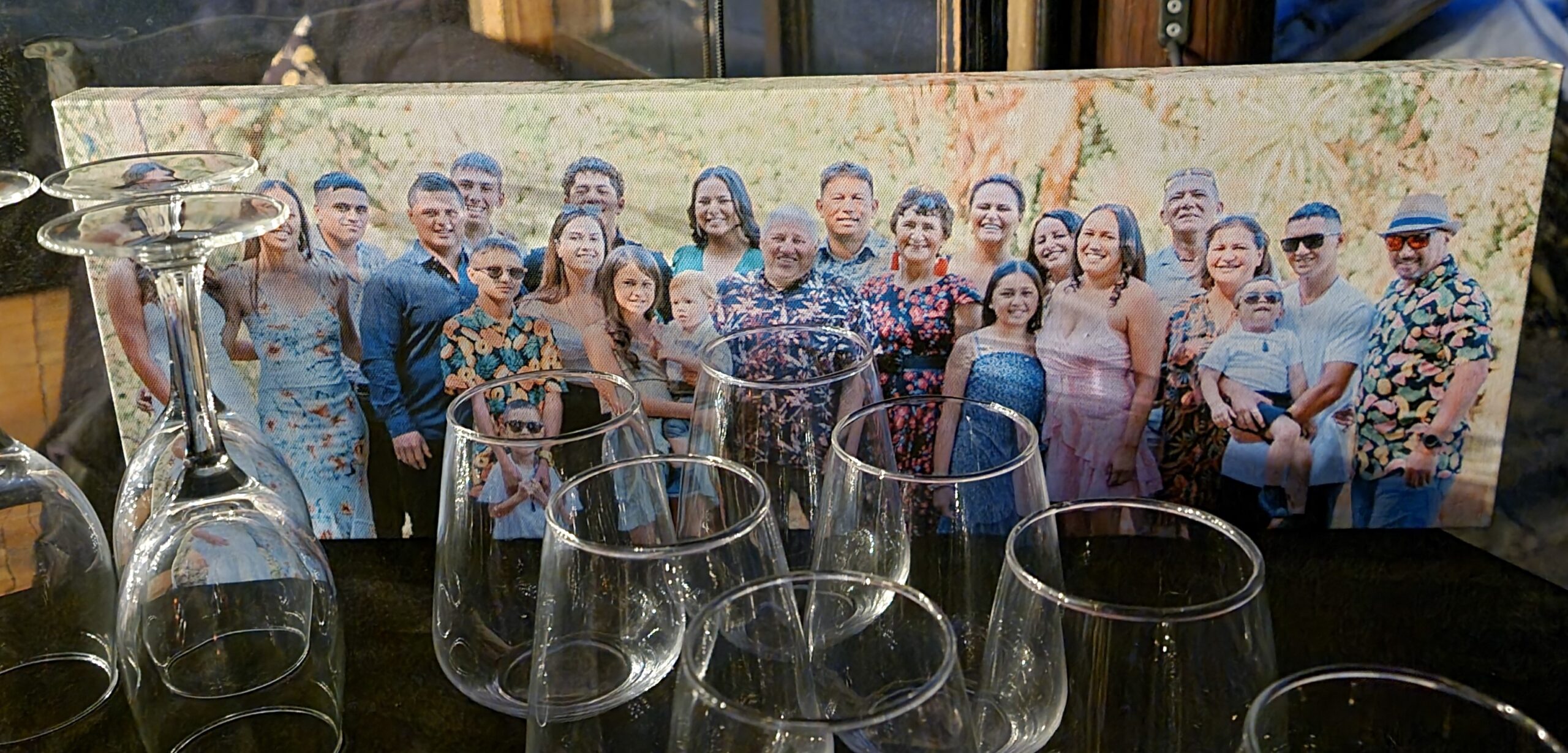
The family split up and sat at the different tables. Mama Maria and I started talking when others were “talking story” at the fire pit, and she came and sat with us, as did ?Ruth?. So we had two members of the Whanau at our table of of six!
We talked a lot about the idea of pepeha. I’m really taken by that. I was directed to a video that talks a bit about it in a song, which is lovely. We also talked about the concept of “Manakitana” – which means giving the best to others, even if you have to do without.
Turns out that there are a lot of “September babies” in their Whanau! ?Ruth? had had her birthday on September 19th. Then – surprise! – Papa, me, and one of Maria’s kids were all on September 22nd!
Well once I found that out, Papa was over tending the fire, and I brought him over my “home-host gift” (the chocolates) and told him that was his birthday present. He was so cute about it!

One of the stories that Ruth told me was about Aokapurangi. The story (though a scan from a newspaper from 1962) is HERE. She and I were talking about things like whether you track your lineage back through the maternal or paternal line (they are paternal), how women in myth and legend save the day, etc. The short version of Aokapurangi’s story is that a very fierce and strong warrior came to kill her people. She stood up to him, and he told her that she could “save the number of people that she could get between her legs.” Well, she thought about it, got up on the Marae roof with its steep pitch, spread her legs across it and had her whole village get into the Marae. When the “bad guy” came to slaughter all those that were not “between her legs,” he found this – and saved everyone due to her ingenuity.
I got a hangi from Papa (a long one, there were like three breaths before I felt the break-away), Mama, and ?Ruth?. That just felt really special. Not sure if they do this with everyone but I know I was one of the last in the bus, and it seemed like we had a special connection. Great night!
If you want $100 off, call OAT at 1-800-955-1925 and request a catalog, tell them you were referred by Sandy Shepard, customer number 3087257, and get $100 off your first trip!

